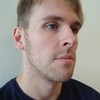
Advertisement
Advertisement
Advertisement
in the listless, frigid hydrosphere
Same cosmic fatstiff freezefearflood
same cuntstiff looptrack fatflood
We like suckle animals, egg animals, whalenut animals
prefer not to give birth to live youngHydrophoneIn the hare the hydrophore
which pumps heaves heft
move the instrument’s degrees
of formless retarded freedom@blakebutler
